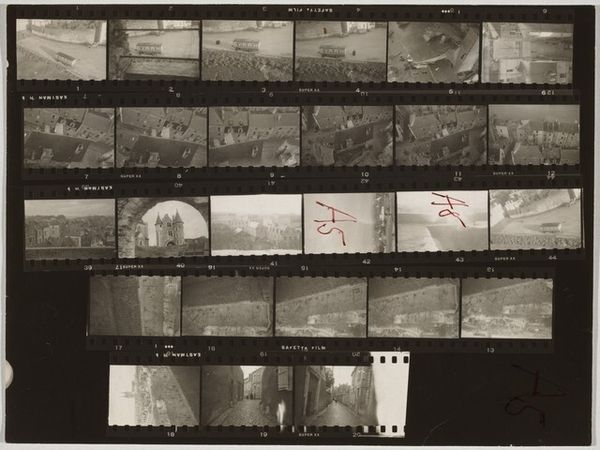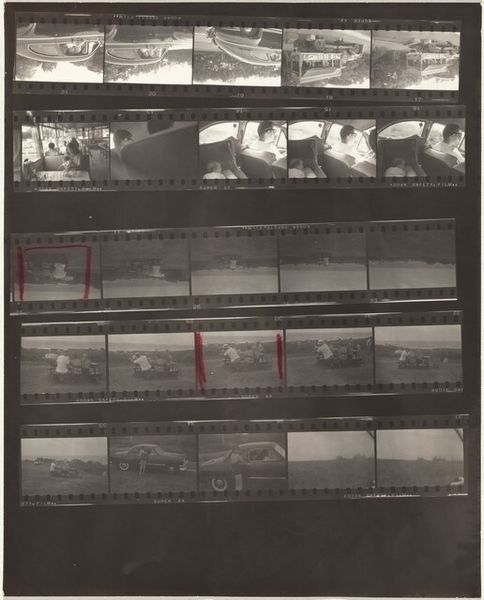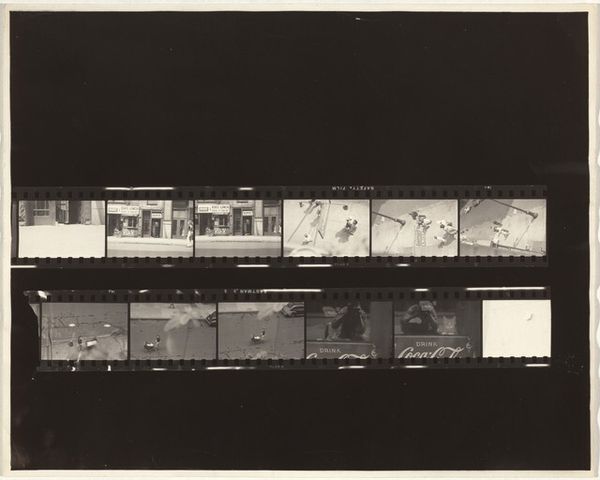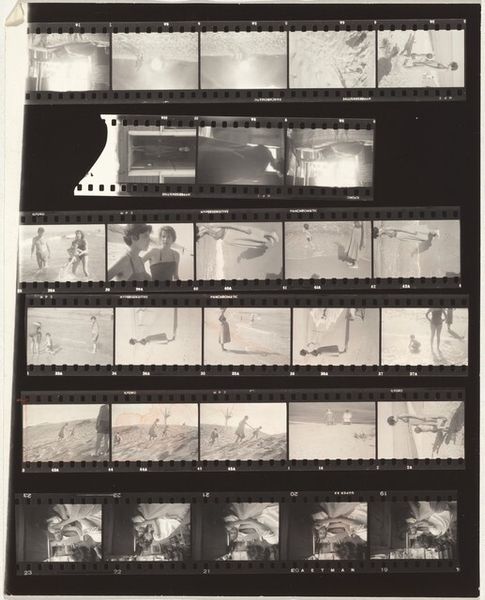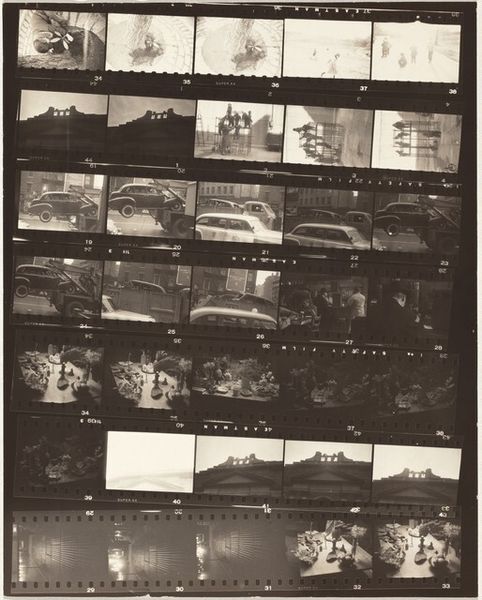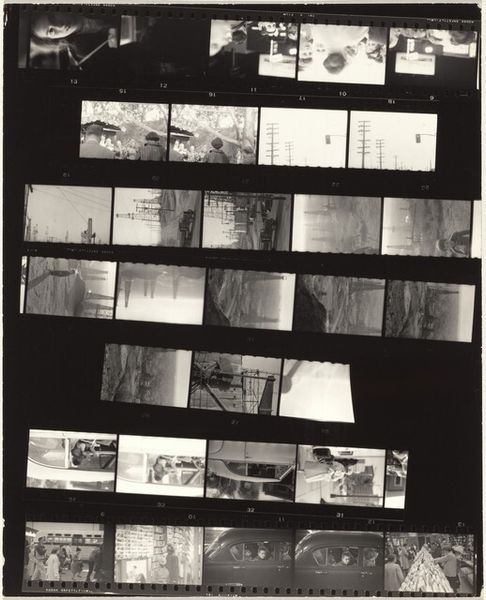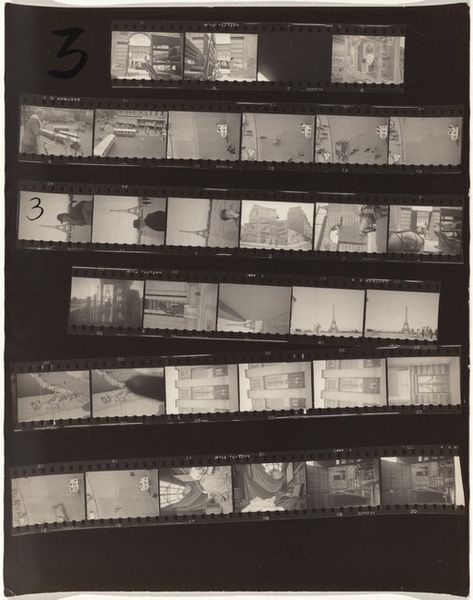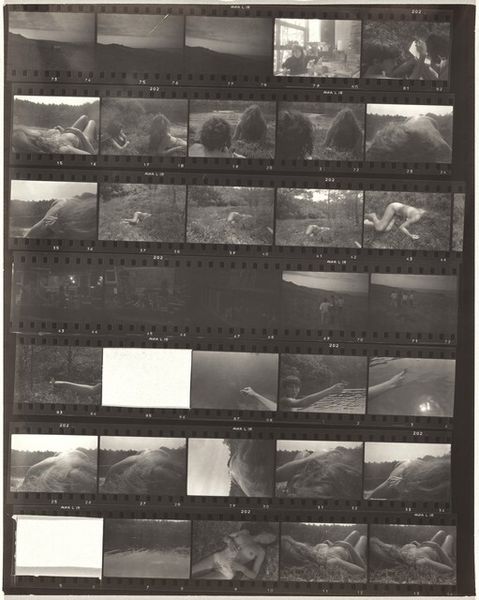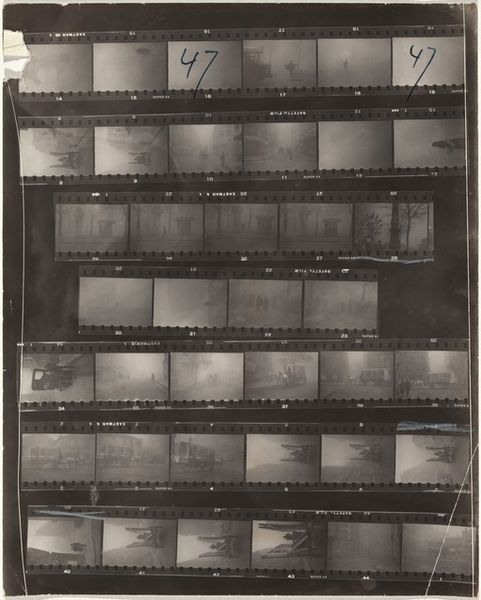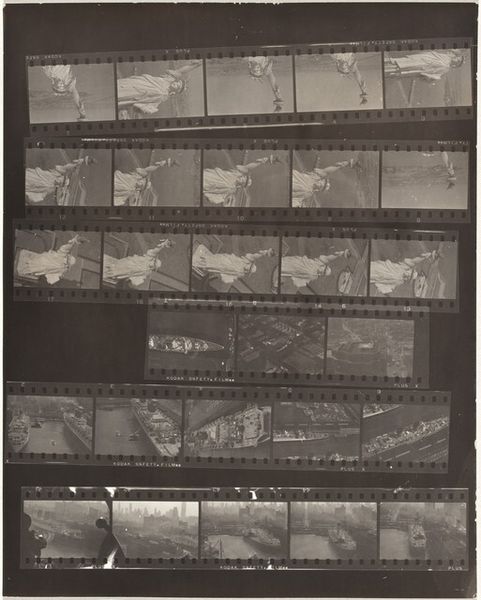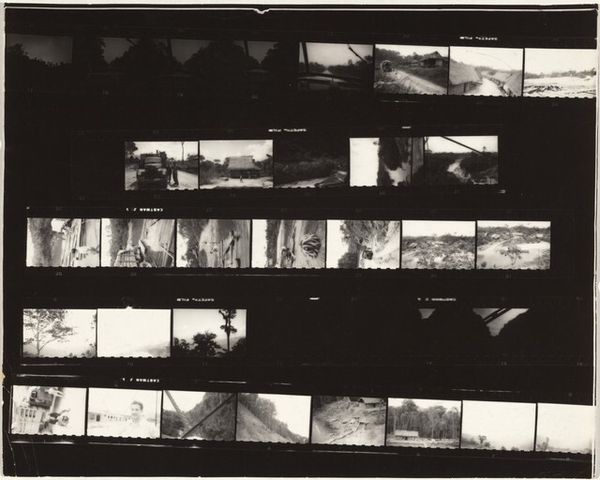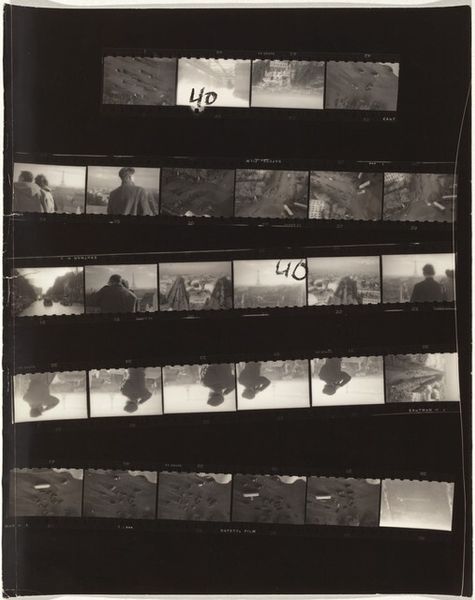
#
film photography
#
wedding photograph
#
photo restoration
#
wedding photography
#
colourisation
#
archive photography
#
historical photography
#
couple photography
#
film
#
celebration photography
Dimensions: sheet: 25.2 x 20.1 cm (9 15/16 x 7 15/16 in.)
Copyright: National Gallery of Art: CC0 1.0
Editor: This is "Family and Ben Schultz—Southampton no number" by Robert Frank, created in 1954. It's a film contact sheet, isn't it? I’m struck by its almost voyeuristic feel – like we're peeking into someone’s personal memories, outtakes from a day at the beach and swimming pool. What do you make of it? Curator: Well, beyond the immediate impression, think about how Frank is using the film strip itself as the final art object. This challenges the conventional role of the photographer as solely the capturer of 'perfect' moments. It makes you consider the broader culture around image making. Editor: I see what you mean! We are used to see one single "perfect shot", the chosen photograph. Curator: Exactly. By presenting the raw, unedited strip, Frank democratizes the photographic process. It's less about the decisive moment celebrated by someone like Cartier-Bresson and more about presenting photography as a product. It also speaks to the evolving role of photography in the '50s, where personal cameras were becoming more accessible. Editor: So, he's making a statement about the societal shift happening in photography? About its growing use in private and social life? Curator: Precisely. He's questioning the traditional art world, suggesting value can be found not just in a singular "masterpiece", but in a collection of related images. How does the concept of family and personal memory play into that statement, do you think? Editor: I guess that showcasing casual family scenes –beach days and such – elevates the everyday experience and emphasizes its worth and artistic value. Curator: Yes. And consider how, even now, contact sheets offer researchers like myself invaluable insights into an artist’s working method. Seeing what was left *out* is as significant as understanding what was chosen for display, even many years later. Editor: That's a great point. It highlights how the selection process shapes the meaning we derive from images. I'll never look at a contact sheet the same way again.
Comments
No comments
Be the first to comment and join the conversation on the ultimate creative platform.
